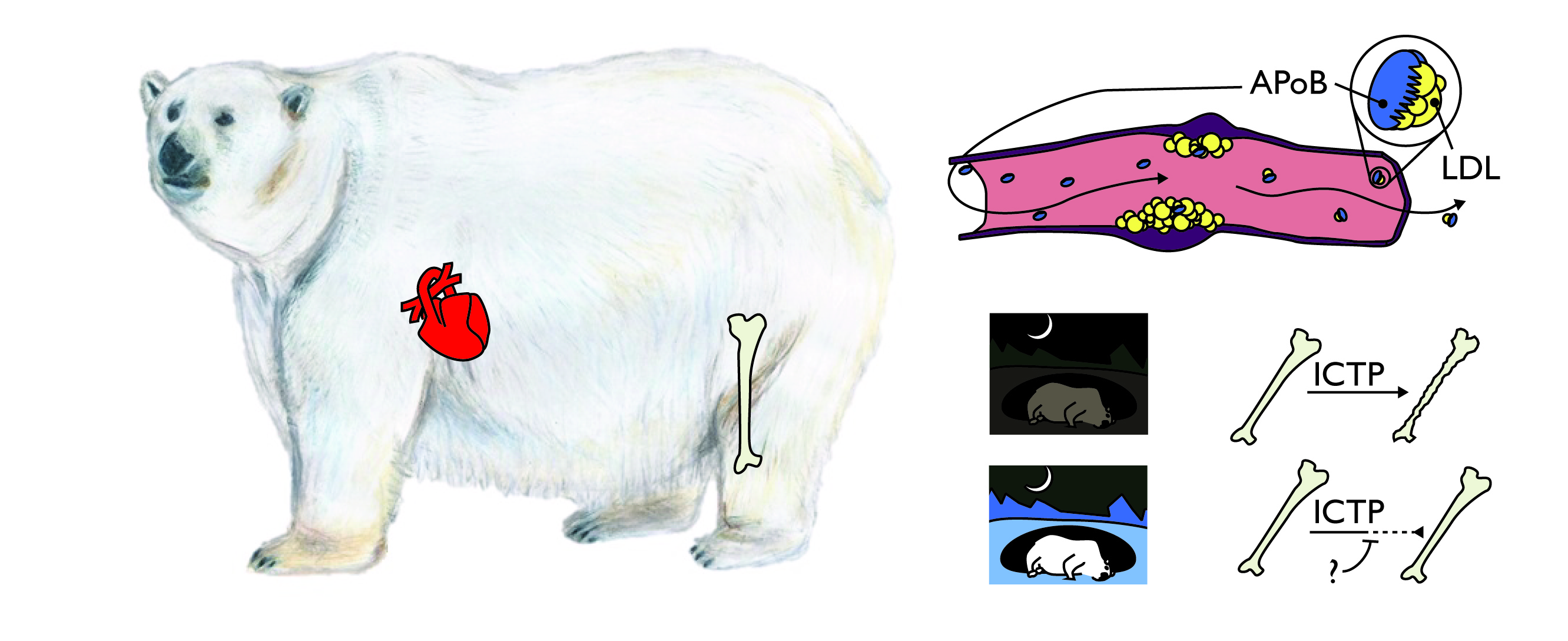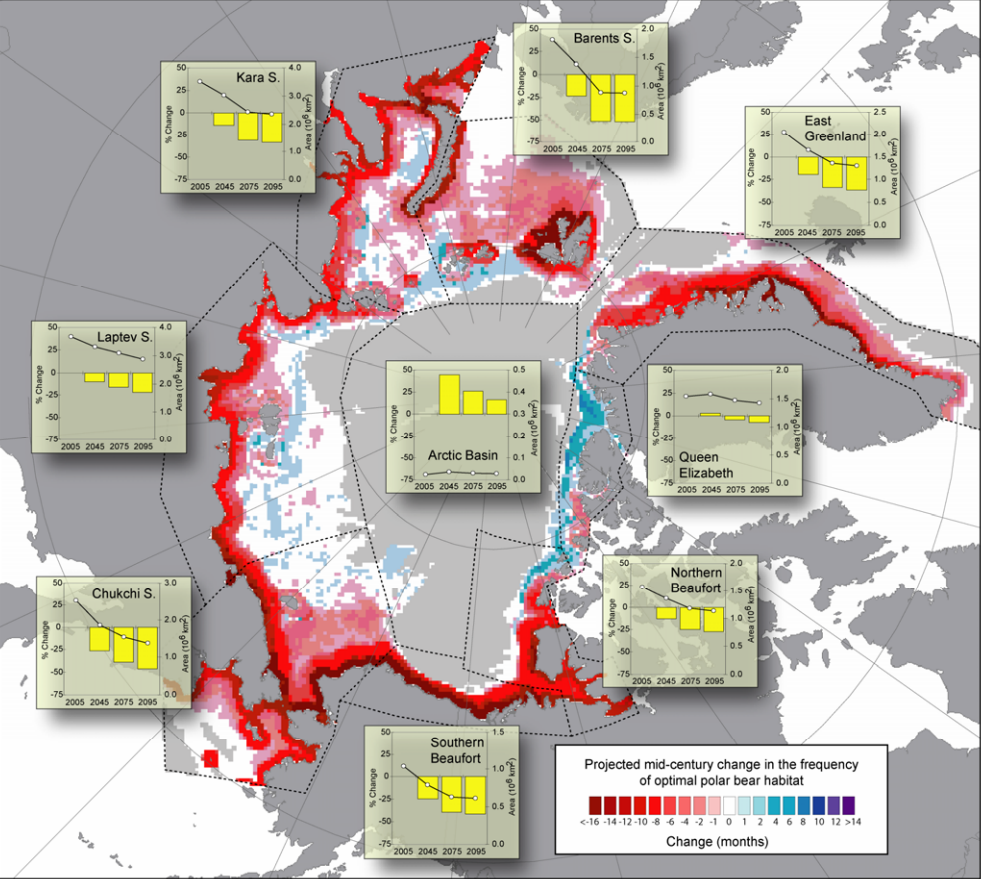SUNDAY, 11 FEBRUARY 2018
Climate change. Already in your mind are images of traffic jams hazy with pollution, melting icecaps, and most likely the polar bear. This year marked the fifth lowest Arctic sea ice extent since records began. The low amount of ice has a severe impact on the bears – in fact, they are increasingly becoming known as the ‘canary in the coal mine’ of climate change. But let’s imagine a world without global warming; would you still care if these animals vanished from the cold, desolate Arctic? Admittedly, they aren’t as cute as pandas; you won’t see them falling off tables and being dragged out of leaf barrels. If anything, news headlines of bears mauling students and besieging meteorologists may do little to inspire caring for this ambling nomad. Yet, perhaps, a brief look into their physiology and behaviour may convince you otherwise: with the polar bear comes a genome that could revolutionise treatment of human conditions like cardiovascular disease and osteoporosis.In the Arctic, the polar bear’s home, temperatures can reach an eyeball-freezing −40°C. Yet the bears are more at risk of overheating than freezing to death. This is because healthy polar bears have up to 11 cm of fat underneath their skin. In fact, this can result in half of their weight being fat. In comparison, humans with this amount of adipose tissue would be considered obese and suffer from atherosclerosis, diabetes and heart disease. Yet the polar bear deals with no such consequences. A 2014 study by Liu and colleagues sheds light on this mystery. They compared the coding regions of genes from polar bears with the ones from their closest relatives from a warmer climate, the brown bears. This allowed them to determine the genes that have allowed polar bears to survive in one of the toughest environments on earth.
 Understanding the polar bear's ability to survive in harsh environments could shed new light on biological regulation of cholesterol as well as bone density
Understanding the polar bear's ability to survive in harsh environments could shed new light on biological regulation of cholesterol as well as bone densityThe genome of the polar bear may also provide the solution for another condition, one that particularly plagues our older generation: osteoporosis. This is a disease where bones show reduced density, usually caused by rare exercise, reduced calcium intake, and food starvation. Bone tissue is dynamic and is constantly being remodelled, meaning that bone is added or removed depending on nutrient availability and the stress that the bone is under. Female polar bears, however, undergo extreme conditions during every pregnancy. Once autumn comes around these females will dig maternity dens and remain in them until spring to birth their cubs. This results in around six months of fasting where the new mothers have to keep themselves and their newly born cubs alive, depleting their own calcium and calorie reserves. Despite all this, their bones remain strong and dense.
Physiologists Lennox and Goodship found an explanation for this paradox in 2008 by comparing biochemical markers in the blood of wild female polar bears before and after denning. After denning markers associated with bone removal were not significantly increased. Prior to denning, markers associated with bone formation, for example osteocalcium, were double that of bears which were not pregnant. Thus, the scientists showed that female bears are able to increase the density of their bones prior to denning, and reduce bone removal during denning to retain a strong skeleton throughout. Hibernating brown bears do not have this capacity and must therefore resort to major bone reformation in the following spring. If the mechanism of bone remodelling in polar bears can be understood, many bedridden humans, and even astronauts, could potentially benefit.
The medical benefits of the polar bear for humanity certainly have their importance in our conservation efforts, but these should not be the only ones in the balance. We tend to want to protect animals we think are intelligent and possess emotions, such as elephants and primates. Bears on the other hand seem to be perceived as stupid and thoughtlessly violent. And yet, anecdotal evidence from the field challenges these assumptions, suggesting for example that polar bears have good problem solving abilities. A male bear called GoGo in Tennoji Zoo, Osaka, has even been observed manipulating his environment through tools. The bear used a tree branch on multiple occasions to knock off a piece of meat hung out of his reach. Problem-solving ability has also been witnessed in wild polar bears (though not as obviously as GoGo); a calculated move by a male bear involved running and jumping onto barrels to brush the leg of a photographer on a platform four metres high. Normally, even male bears at three metres tall would not be able to reach that height.
 Climate change chips away polar bears' natural habitat. Some experts predict that two-thirds of the population will go extinct by 2050
Climate change chips away polar bears' natural habitat. Some experts predict that two-thirds of the population will go extinct by 2050As for emotions, while the evidence is once again anecdotal, many bears have been seen to swat ice and snow - seemingly out of frustration - when they have just missed out on a kill. Moreover, polar bears can form unusual relationships with other species, including playing with sled dogs. Remarkably, one hand-raised polar bear called Agee has formed a close relationship with her owner Mark Dumas to the point where they even swim together. This is seen as even more astonishing when it is known that polar bears do actively hunt humans in the wild. Thus, polar bears are not necessarily aggressive all the time, and may form strong attachments to other individuals.
So, climate change or not, perhaps spare a few more thoughts for the polar bear. Their extinction will mean the loss of not only potential breakthroughs in human medicine, but more importantly the disappearance of an intelligent, majestic animal.
Rachael Beasley is a 2nd year undergraduate studying Natural Science at Homerton College
Image credit: Travel Manitoba; Oran Maguire & Rachael Beasley; USGS;
